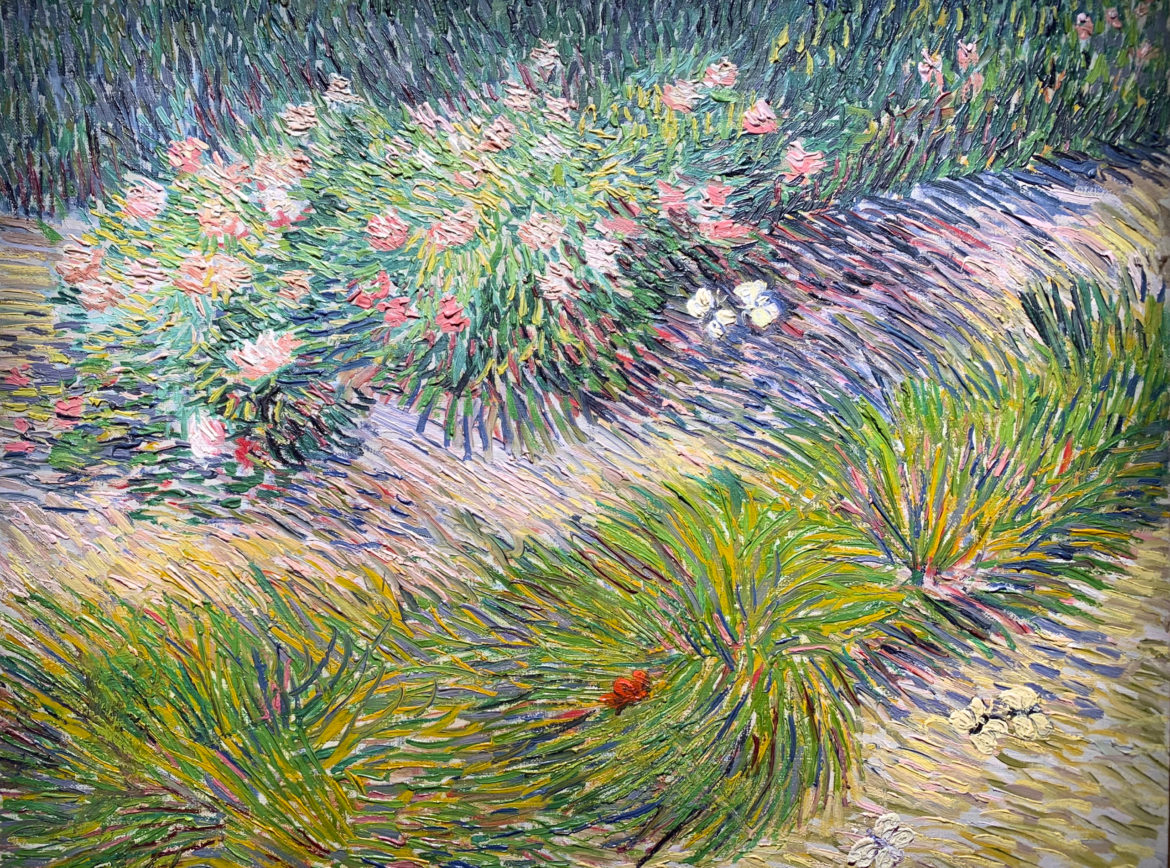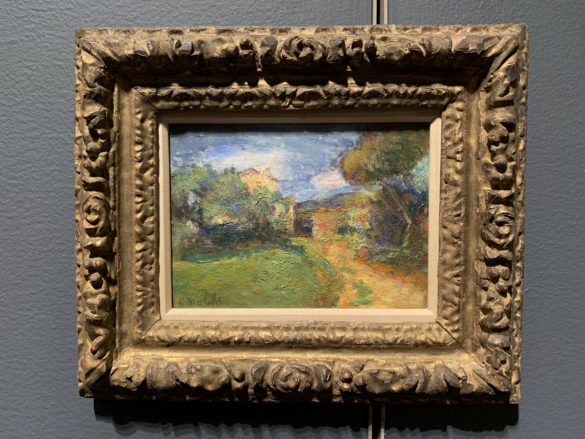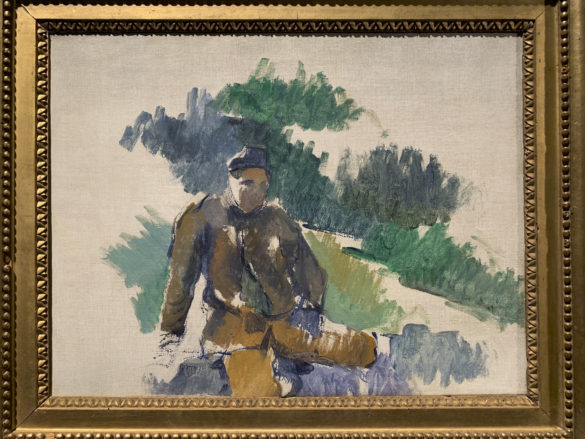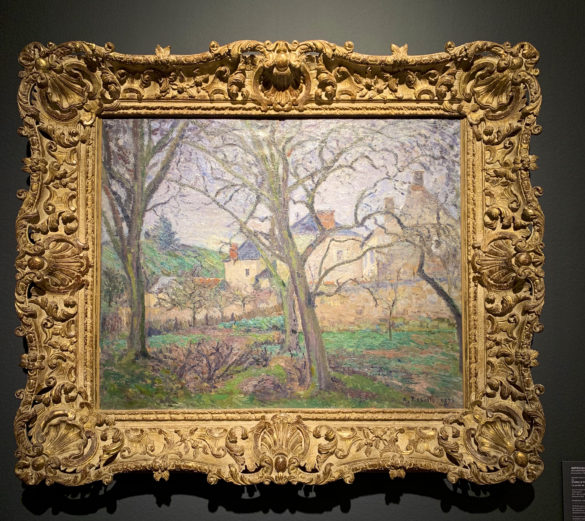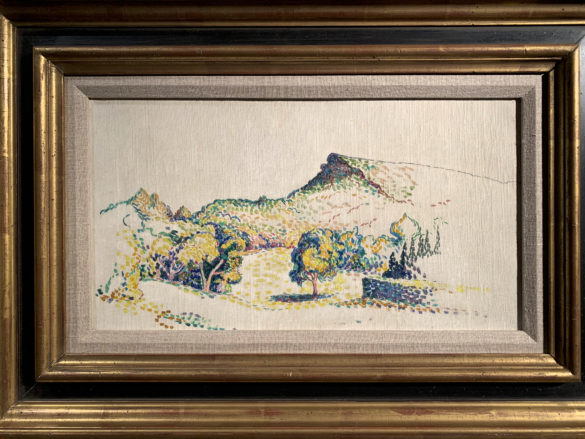The Impressionist and Modern Art Evening Sale opened 20th Century Week at Christie’s New York with standout masterworks. Property from groupings such as The Collection of Elizabeth Stafford, The Sam Rose and Julie Walters Collection, The Collection of A. Jerrold Perenchio, and more, combined to present captivating artworks from the genre.
Never before I have seen such a large amount of rare art works together in one sale! (Totaled a number of $239.4 M $279.2m with fees). Among the spectacular illustrated moments of Impressionism to Modern art celebrating the use of light, the investigation of colors, materials, textures and media, I have picked a few of my choice depicting peaceful garden sceneries. They reflect the artists soothing relationships with nature , family and serenity and a perfect escape from today’s gray, rainy day in our hectic Manhattan. I am also suggesting to fill you apartments with almost natural topiary trees from our e- shop and the Deruta of Italy ‘s beautifully hand painted “ Giardino” dinnerware collection Thank you Christie’s for such inspiration!

Coin de jardin avec papillons – Vincent Van Gogh’s (1887)
More high profile was the failure of Vincent Van Gogh’s Coin de jardin avec papillons (1887) put for sale by a London based collector became the most expensive work of Van Gogh’s Paris period to be offered at auction.
The scene is probably from the Voyer d’Argenson park in the Parisian suburb of Asnières, near the Seine, where Van Gogh loved to work. What really brings the picture to life are six butterflies (five wood whites and a solitary red peacock) hovering among the foliage.
 Le bassin aux nymphéas – Claude Monet
Le bassin aux nymphéas – Claude Monet
Monet was an avid gardener, and much of his time at Giverny was spent in his sizeable garden. Peonies and red geraniums jostled for attention with pansies and yellow roses. His most famous horticultural feat, though, was creating a water garden, complete with a lily-covered pond, which, over the decades, he’d paint around 250 times. In this particular painting, he unified the scene’s elements by adopting a diaphanous veil of color all over, laid down with a light, transparent touch.
 Baigneuse Assise – Pierre-Auguste Renoir (1841-1919) Painted in 1890
Baigneuse Assise – Pierre-Auguste Renoir (1841-1919) Painted in 1890
When Renoir painted this idyllic scene of a rosy-cheeked bather seated beside a woodland stream, he was in the midst of a vital period of artistic reassessment and renewal. In 1887, he had exhibited Les grandes baigneuses, a veritable manifesto of the hard-edged, Ingres-inspired manner that he had painstakingly cultivated since the middle of the decade. Renoir here employed an exquisitely soft, painterly touch throughout, fusing the body of the young bather with the lush vegetation that surrounds her. Viewed in profile, seemingly unaware of the viewer, she embodies Renoir’s ideal of woman as a natural being, in harmony with the earthly paradise of her setting.

Jeune Fille dans les jardin de Giverny – Claude Monet (1840-1926) Painted in 1888
The scene is Monet’s evocation of late summer in his gardens at Giverny. Germaine, the fifteen-year-old daughter of Alice Hoschedé, walks up the grande allée, the wide path leading from the main entrance to the house; She is delivering two batches of flowers, freshly cut in the garden, to the house, to be arranged in bouquets to adorn the rooms, and perhaps even for the artist to paint. When living previously at Argenteuil and Vétheuil, Monet had installed a garden on those grounds that were available to him. Just as he needed the local landscape for his painting, he also required this kind of domestically cultivated site close at hand, not least for the visual joy it provided, but also for the study of color in nature in its purest form, and as convenient subject material for still-life painting.


SaveSave
